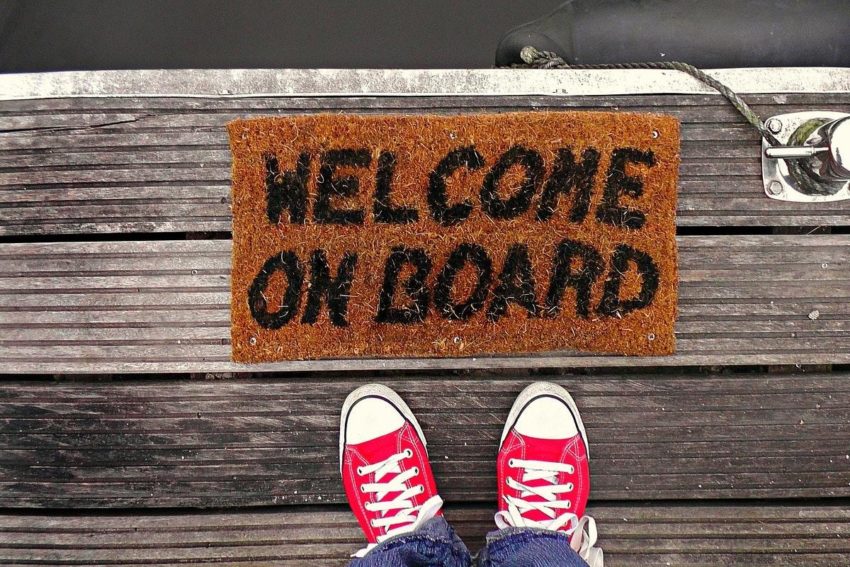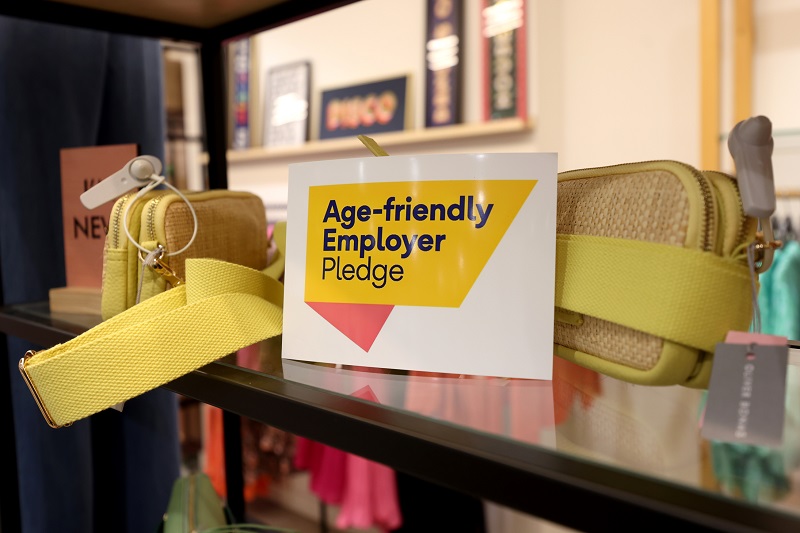Onboarding is the natural next step after you hire a new employee and one that will significantly determine the course of their career within your organisation.
Adding a new member to your team means bringing on a new set of unique talents and skills that will contribute to your organization’s success.
However, for your new employees to thrive, they need to feel comfortable and supported in their workplace. Onboarding is a critical step as it will introduce the new hire to the work you do, but also the culture they are joining.
Whether you’re starting the onboarding program in your company or want to make it a little more fun, here are some helpful ideas you can use.
1. Mentorship or buddy approach
Pairing your new employee with a buddy to assist them in their first weeks is a great way to start building connections among the team from day one.
Throwing a new hire into a large group of people to collect their bearings on their own can be overwhelming. Assigning an individual partner at first helps to ease the new hire into the team dynamics.
This can be particularly valuable for employees with disabilities and different needs to avoid overload as they’re adapting to a new environment.
The duty of a buddy is to show the new employee around the office, explain the company policies and procedures, and generally help the new employee become familiar with the organisation’s culture.
When selecting a buddy or mentor for the new hire, look for someone with the following qualities:
● Ability and willingness to mentor other people
● Outstanding past performance
● Knowledgeable and skilled in the new worker’s job
● Has excellent interpersonal and communication skills
● Is the new employee’s peer
● Has the time to interact with the new hire
● Is highly accepted and regarded by the current staff
To be a trustworthy source of information, a buddy should exhibit your organisation’s values and be conversant with its informal and formal structures.
Your existing employees are your most important advocates. Therefore, include your current employees in the onboarding process, as they can best show your new member what your organisation is all about.
2. Mix formal and informal training to bring team members together
When new employees join the company, there should be a training schedule to learn everything concerning their role and the business. To make the onboarding process more fun, you may want to combine formal and informal training.
Formal training involves organised procedures and tasks that help new hires adjust to their new roles. In formal training, new employees are usually separated from the existing workers so that they can participate in coordinated activities for orientation, socialisation, and in-classroom training.
Department heads should organise these training to connect new hires with the overall organisational objectives. The training topics should be about addressing employee needs and empowering them with the skills and information required to complete their duties efficiently.
Other than addressing the technical skills, the formal training programme should teach new employees on how to stay productive and engaged at the company.
Informal training includes semi-organised and ad hoc activities to help new employees learn more about their new job and people they’ll work with. It may include:
● Impromptu one-on-one meeting and coaching with the CEO and new colleagues
● Job shadowing
● Minor activities of getting started at the organisation, such as receiving equipment and badges
● Sending welcome gifts or flowers to new hires
● Sending informal emails and calls to elevate the enthusiasm
● Using trivia on video chat or in-person
Both formal and informal training help to ensure that the new employee has the relevant skills and knowledge for his or her new job.
Informal conversations could enable your employees to open up about their backgrounds, hobbies, experiences, or common interests.
And although they may not have a direct impact on their performance, these titbits could provide valuable insights for your team on how to communicate best and spark some new ideas, create possible new collaborations, and strengthen bonds in the team.
3. Rotate the employee through different departments or teams
Diversity in the workplace improves your company’s capacity for innovation and employee engagement, but to make the most of it, your employees need to learn from each other and collaborate.
Once new hires know what projects they’ll work on, it’s time to know who they’ll work with. If your company is big enough with various departments, then relationship building should be an essential part of onboarding.
During the first days of the new employee’s job, schedule introductory meetings with different departments.
Introducing new employees to as many people in your company as possible can help your new hire get “the big picture” and see how their work is a valuable piece of the overall structure.
You can make the introduction in a couple of creative ways, such as posting the new hire announcement on the bulletin board or main office screen and letting it run for a few days. The next step is to convene a casual meeting where new hires can interact with existing workers.
You could also send a brief email to colleagues, post on the company Facebook page, or include the announcement in your company newsletter.
4. Frequently ask new hires for their opinion and feedback
For the most part, the onboarding process involves the flow of information from the organisation to the new hire, but that’s not how it should be.
You can show the new workers that they’re already influencing the organisation by getting their feedback regarding the onboarding process. Seek their opinion on what worked effectively, what requires improvement, and the types of changes they may suggest.
A better approach may be to use a survey to collect this information. You may also request new employees to give their feedback directly to the people team, the company ambassador, or the leader in charge of the onboarding process.
5. Onboarding remote employees
The above tips work well for new hires within a physical office setting. Can companies that hire remote workers onboard their teams too? Of course—thanks to technology.
Technology has enabled companies to tap into talent pools they weren’t able to access before. At the same time, it has created employment opportunities for people who cannot access traditional workplace settings.
Internal company systems such as communication tools, message boards, apps, intranets, and others can help a candidate get a full grasp of all the info they need for successfully starting their job. You can also explore some creative ways, such as virtual maps, gamification, quizzes, etc.
Nowadays, many companies leverage remote teams a lot in developer roles. Whether you’re just onboarding new developers or working closely with an outside professional development team to create solutions for your company, make it a point to design your virtual platforms to conform to all necessary accessibility standards.
Concluding thoughts
Onboarding is as important as hiring, which is why every company should plan for it. The quality of the onboarding process can influence the new employee’s performance and even loyalty to the company.
An enjoyable onboarding process enables employees to settle into their new roles faster and provide more quality work. Eventually, your business will reap the benefits.
—
Heather Redding is a part-time assistant manager, solopreneur and writer based in Aurora, Illinois. She is also an avid reader and a tech enthusiast. When Heather is not working or writing, she enjoys her Kindle library and a hot coffee. Reach out to her on Twitter.








